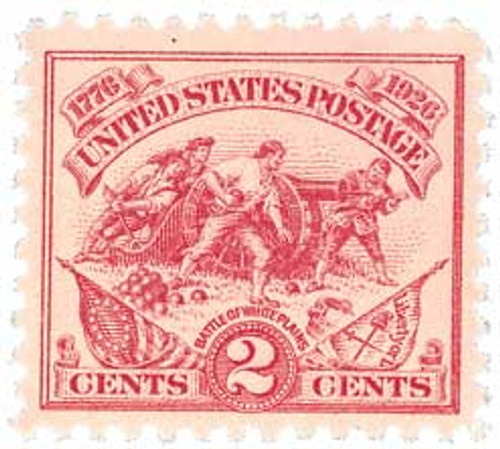
# 630 - 1926 2c Battle of White Plains Souvenir Sheet - International Philatelic Exhibition Issue
1926 Hamilton’s Battery
2¢ Battle of White Plains
First City: New York, NY
Quantity Issued: 107,398
2nd U.S. International Philatelic Exhibition
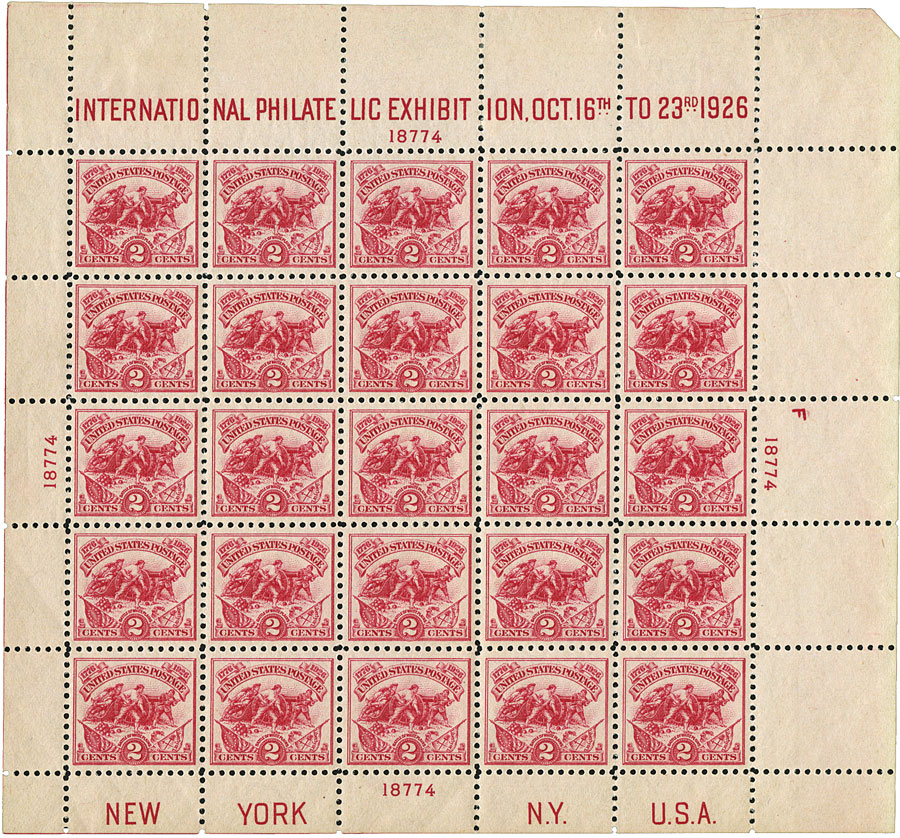
On October 16, 1926, the U.S. hosted its second international philatelic exhibition in New York, New York.
America hosted its first exhibition 13 years earlier, also in New York City, in 1913. The Post Office Department hadn’t yet created a division to cater directly to stamp collectors, so there were no U.S. stamps issued to commemorate the event.
| Remember – you can click on any of these images to find more conditions and covers and to buy them for your collection. |
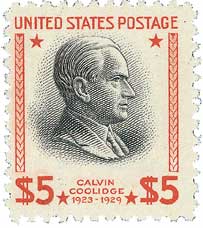
A lot would change by the time of the second exhibition, which would mark a number of firsts. Of these, it established the pattern of U.S. exhibitions being held in the “6” year of each decade (except for 1947 and 1997 when the exhibitions honored the anniversaries of the first U.S. postage stamps).
The show opened at 2:30 p.m. on Saturday October 16, 1926. From the White House, President Calvin Coolidge turned a golden key that was connected to the Grand Central Palace, formally opening the exhibition. Thousands of collectors lined up to view 800 frames, which each held 30 pages.
The total value of the stamps exhibited was estimated at over $10,000,000 and included the famous British Guiana stamp that was then owned by Arthur Hinds. (That’s equal to $451,000,000 in today’s wages!) It was the first time the legendary stamp was displayed in the United States.
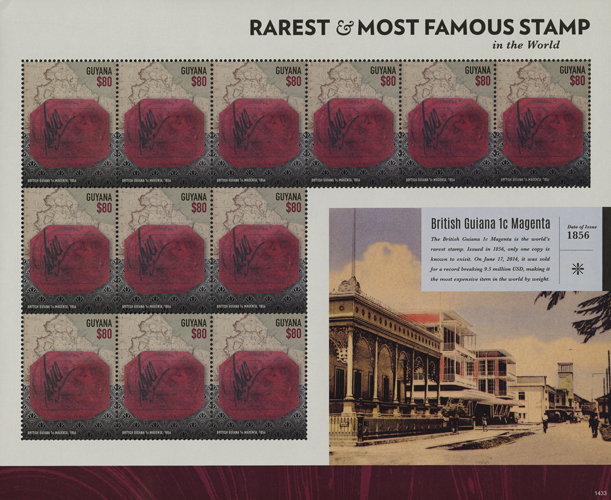
In addition to the exhibits, there were 50 dealer booths plus official exhibits by the U.S. government plus those of Canada, Sweden and Austria. Experienced collectors will recognize the names of several exhibitors – the list is a virtual Who’s Who of philately – Arthur Hinds, Carroll Chase, Ernest Ackerman, Henry B. Gibson, John Klemann, Alfred F. Lichtenstein, and Philip H. Ward.
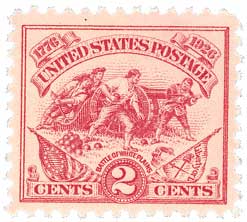
Mekeel’s Weekly Stamp News described the exhibition as having been a “success beyond belief” that it exceeded “the highest expectations in every respect.” Its editors predicted it had established “philately in the front rank of recreational studies.”
Of course, the biggest story from the 1926 show was the White Plains issue. The U.S. Post Office Department was more actively engaged with collectors than they had been in 1913 and decided to issue a stamp at the show. They ultimately decided to release the Battle of White Plains stamp, originally scheduled for release on October 28 in White Plains, New York (to honor the 150th anniversary of that battle), at the show. The stamp would be issued on October 18 at the show in New York City. In addition to issuing the stamp in a standard pane of 100 (U.S. #629), they also produced miniature sheets of 25 stamps with the words “International Philatelic Exhibition, Oct. 16th to 23rd, 1926” in the selvage. This was America’s first souvenir sheet.

And there was another first – the Bureau of Engraving and Printing authorized stamps to be printed outside of their Washington headquarters at the show. The Post Office exhibit included a printing press where these miniature sheets were printed. The BEP initially planned to send these sheets back to Washington to be gummed, perforated, and then shipped back to the show for sale. But this was never done and the sheets were destroyed.

In addition to the White Plains sheet, there was a set of four Cinderellas available at the show. Printed by the American Bank Note Co., these Cinderellas pictures both sides of the globe, along with four modes of transporting the mail – Pony Express, merchant steamship, railroad, and airplane.
.
1926 Hamilton’s Battery
2¢ Battle of White Plains
First City: New York, NY
Quantity Issued: 107,398
2nd U.S. International Philatelic Exhibition

On October 16, 1926, the U.S. hosted its second international philatelic exhibition in New York, New York.
America hosted its first exhibition 13 years earlier, also in New York City, in 1913. The Post Office Department hadn’t yet created a division to cater directly to stamp collectors, so there were no U.S. stamps issued to commemorate the event.
| Remember – you can click on any of these images to find more conditions and covers and to buy them for your collection. |

A lot would change by the time of the second exhibition, which would mark a number of firsts. Of these, it established the pattern of U.S. exhibitions being held in the “6” year of each decade (except for 1947 and 1997 when the exhibitions honored the anniversaries of the first U.S. postage stamps).
The show opened at 2:30 p.m. on Saturday October 16, 1926. From the White House, President Calvin Coolidge turned a golden key that was connected to the Grand Central Palace, formally opening the exhibition. Thousands of collectors lined up to view 800 frames, which each held 30 pages.
The total value of the stamps exhibited was estimated at over $10,000,000 and included the famous British Guiana stamp that was then owned by Arthur Hinds. (That’s equal to $451,000,000 in today’s wages!) It was the first time the legendary stamp was displayed in the United States.

In addition to the exhibits, there were 50 dealer booths plus official exhibits by the U.S. government plus those of Canada, Sweden and Austria. Experienced collectors will recognize the names of several exhibitors – the list is a virtual Who’s Who of philately – Arthur Hinds, Carroll Chase, Ernest Ackerman, Henry B. Gibson, John Klemann, Alfred F. Lichtenstein, and Philip H. Ward.

Mekeel’s Weekly Stamp News described the exhibition as having been a “success beyond belief” that it exceeded “the highest expectations in every respect.” Its editors predicted it had established “philately in the front rank of recreational studies.”
Of course, the biggest story from the 1926 show was the White Plains issue. The U.S. Post Office Department was more actively engaged with collectors than they had been in 1913 and decided to issue a stamp at the show. They ultimately decided to release the Battle of White Plains stamp, originally scheduled for release on October 28 in White Plains, New York (to honor the 150th anniversary of that battle), at the show. The stamp would be issued on October 18 at the show in New York City. In addition to issuing the stamp in a standard pane of 100 (U.S. #629), they also produced miniature sheets of 25 stamps with the words “International Philatelic Exhibition, Oct. 16th to 23rd, 1926” in the selvage. This was America’s first souvenir sheet.

And there was another first – the Bureau of Engraving and Printing authorized stamps to be printed outside of their Washington headquarters at the show. The Post Office exhibit included a printing press where these miniature sheets were printed. The BEP initially planned to send these sheets back to Washington to be gummed, perforated, and then shipped back to the show for sale. But this was never done and the sheets were destroyed.

In addition to the White Plains sheet, there was a set of four Cinderellas available at the show. Printed by the American Bank Note Co., these Cinderellas pictures both sides of the globe, along with four modes of transporting the mail – Pony Express, merchant steamship, railroad, and airplane.
.













